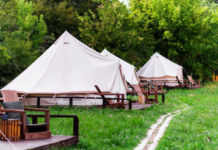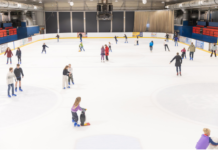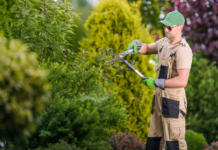Besides the beautification of a home, effective landscaping enhances the property’s worth and makes it a comfortable place to live and entertain loved ones. Enhancing your residential landscaping can be done in many ways, depending on what you want to achieve whether it is making your outdoor space more useful or even making it more aesthetically appealing.
These guidelines include selecting the right plants and accentuating them with hardscape features, and you will be well-equipped to create your outdoor living spaces that are as visually appealing as they are comfortable and informal.
1. Plan with Purpose
It is important to have a plan in mind when beginning any landscaping project so as not to get confused later. Evaluate your landscaping area and consider how it will play a role in the purpose or utility you have in mind. Would you like to have an area for relaxation, for laying the greens or is it a play area for children?
Think about how your family uses the space; additionally, think about what parts of the space are most useful to you. Design your proposals superficially and even draw a rough picture, making sure that all the facets interconnect. Proper planning helps avoid haphazard execution resulting in an attractive landscape design that meets your lifestyle needs.
2. Choose Native Plants for Low Maintenance
Another important factor to consider when improving the view of residential properties is the choice of plants. Choosing species that by their nature can adapt to the region and local environment and soil requirements will greatly decrease the amount of maintenance required.
It is understood that native plants consume less water, are less vulnerable to pests and diseases, and in essence, native plants grow well with minimal intervention. In the same way, local wildlife like birds and butterflies are also drawn to them as adding movement and life to your garden. It also maintains the blend of shrubs, flowers, and trees which are also very crucial in giving different color schemes throughout the year.
3. Incorporate Hardscape Elements
Hardscaping comprises paths, paving slabs, and walls among others; not only do they bring form to the landscape but also functionality. For instance, while a stone pathway in a garden makes sure that every visitor is well-directed, a patio makes sure that anybody hosting an outdoor party has enough space on which to entertain the guests.
Retention walls can be useful in landscaping, especially in areas with undulating terrains, and can also be used for aesthetic purposes. While choosing hardscapes for your yard, it is recommended to use stones, bricks, or pavers similar to that of your home’s architecture and the environment of your yard.
4. Add Outdoor Lighting for Safety and Ambiance
Outdoor lighting is one of the most basic yet highly beneficial ways of improving landscape amenities while making the surroundings safer to navigate at night. Lanterns, porch lights, or other outdoor lights on walkways, patios, and entry paths allow you to safely navigate the yard in the evening as well as enhance its security.
Celestial lighting that can complement the objective lighting should also be considered to accentuate specific features of the landscape, such as trees, water, or flower beds. Solar or LED are the most preferred type of lighting for sustainability and cost reduction.
























